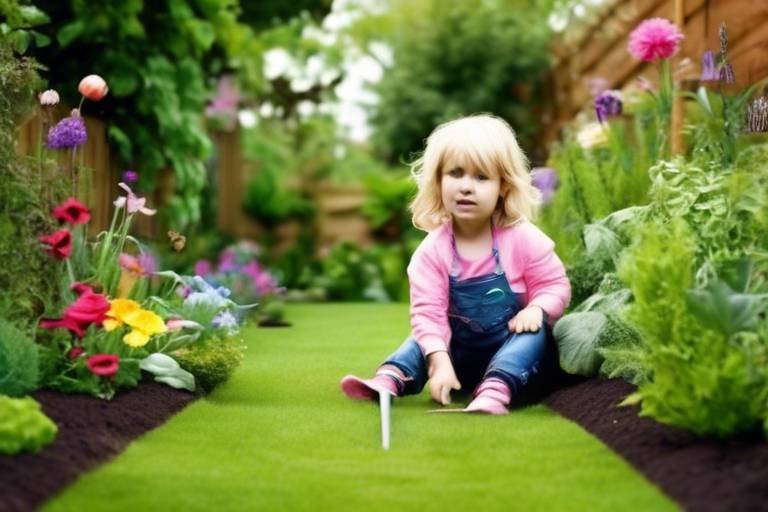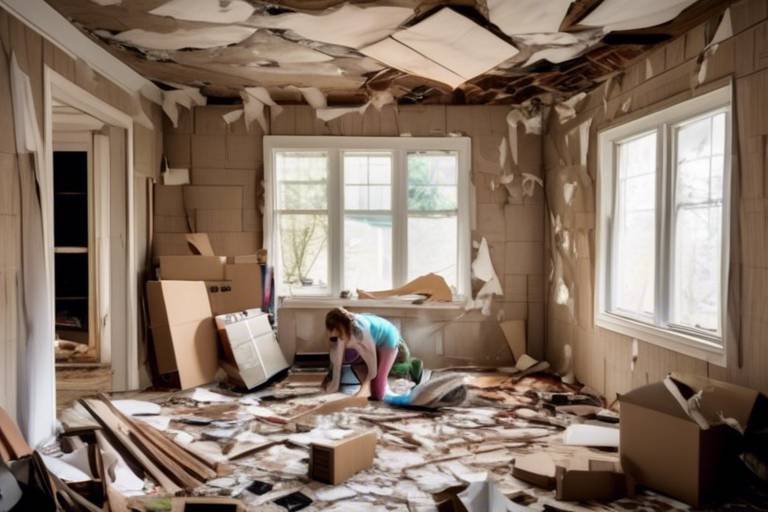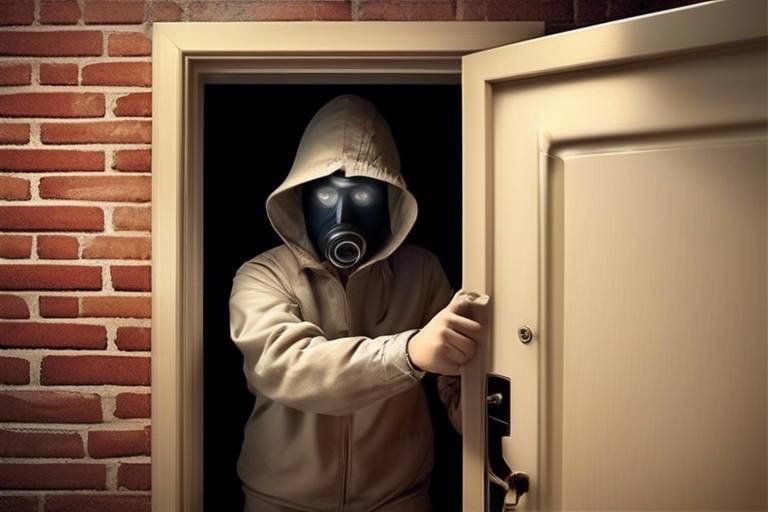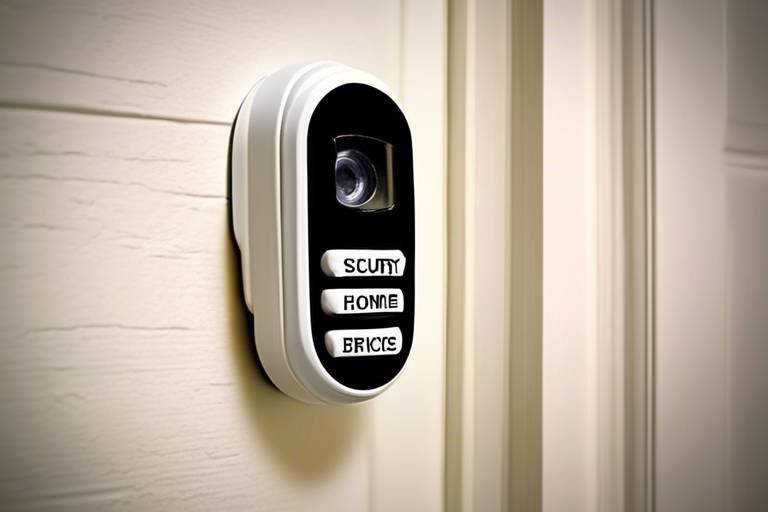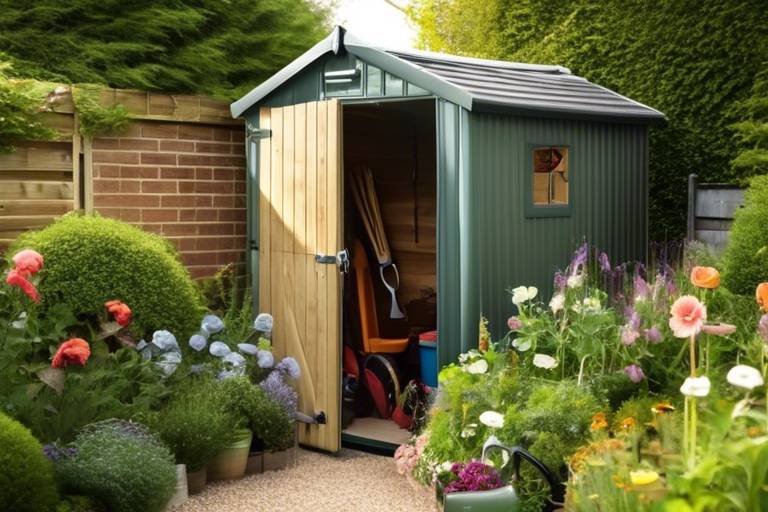How to Make Your Backyard Safe for Kids
Creating a safe haven in your backyard for your little ones is not just a good idea; it's a necessity. Kids are naturally curious, and their explorations can sometimes lead to unexpected dangers lurking in the garden. From sharp tools to toxic plants, there are numerous hazards that can turn a fun day of play into a trip to the emergency room. But fear not! With a few thoughtful steps, you can transform your backyard into a safe paradise where your children can explore, play, and grow without the looming worry of accidents. In this article, we’ll dive into essential strategies for assessing hazards, implementing safe landscaping practices, choosing the right play equipment, and ensuring vigilant supervision. Let’s get started on making your backyard not just a play area, but a safe and enjoyable environment for your kids!
The first step in ensuring a safe backyard is to conduct a thorough assessment of potential hazards. This means taking a close look at your outdoor space and identifying anything that could pose a risk to children. Start by checking for sharp objects like broken glass or metal scraps, as these can easily cause cuts or injuries. Next, consider the plants in your yard. Some common garden plants can be toxic if ingested, so it’s crucial to know which ones to avoid. Additionally, pay attention to the ground surface. Uneven or rocky areas can lead to trips and falls, which are all too common among playful children. By identifying these hazards, you can take proactive steps to mitigate risks and create a safer play area.
Implementing safe landscaping practices can significantly reduce risks in your backyard. One of the first things to consider is the selection of child-friendly plants. Opt for non-toxic varieties that won't harm curious little hands and mouths. It's also essential to keep pathways and play areas clear of obstacles. A well-maintained yard not only looks good but also minimizes the chances of accidents. Regularly trimming bushes and mowing the lawn can help maintain a safe environment. Additionally, consider using soft ground cover materials, such as grass or mulch, to cushion falls. A little attention to landscaping can go a long way in ensuring your backyard is a safe haven for your kids.
When it comes to selecting plants for your backyard, choosing non-toxic varieties is crucial for a safe play environment. Familiarize yourself with both safe and harmful plants. For example, while sunflowers and daisies are safe, plants like foxglove and oleander can be toxic if ingested. Here’s a quick reference table to help you:
| Safe Plants | Toxic Plants |
|---|---|
| Sunflowers | Foxglove |
| Daisies | Oleander |
| Marigolds | Azalea |
Using native plants in your landscaping can enhance safety. These plants are typically well-adapted to the local environment, which means they’re less likely to be toxic or invasive. Moreover, native plants often require less maintenance and are more resilient to local pests and diseases. This can lead to a healthier backyard that’s safer for your children to explore.
Designating specific areas for play can greatly enhance safety in your backyard. Consider using soft materials for ground cover, such as rubber mats or mulch, to cushion falls. Additionally, ensure that any play equipment is age-appropriate and well-maintained. Regularly inspect swings, slides, and climbing structures for wear and tear. By creating a designated play area, you can help keep your children safe while allowing them the freedom to enjoy their outdoor space.
Choosing and installing safe play equipment is vital for backyard safety. Equipment should meet safety standards and be age-appropriate to prevent accidents and injuries. When selecting play structures, look for those made from durable materials with smooth edges. It's also important to ensure that any swings or slides are securely anchored and have adequate safety features, such as guardrails. Regularly check the equipment for signs of damage or wear, and address any issues immediately. Safe play equipment can provide hours of fun while keeping your kids protected.
Regular maintenance of play equipment is essential in preventing wear and tear that could lead to accidents. Conduct frequent inspections to ensure everything is in good condition. Look for rust, loose bolts, or frayed ropes, and address any issues promptly. A little routine care can go a long way in preserving the safety of your backyard playground.
Using safe surfacing materials, such as mulch, rubber mats, or sand, can significantly reduce the risk of injury from falls. These materials provide cushioning and help create a safer play environment. When installing surfacing, make sure it is deep enough to absorb impacts, especially under swings and slides. By investing in safe surfacing, you can help protect your children from potential injuries while they enjoy their playtime.
Supervising children while they play is essential for safety. Parents should establish clear rules and stay vigilant to prevent accidents. This means being present and actively engaged while children are outside. Set boundaries for where they can play and communicate these boundaries clearly and consistently. By doing so, you not only keep them safe but also teach them to understand the importance of safety in outdoor play.
Establishing boundaries helps children understand where they can play safely. Parents should communicate these boundaries clearly and consistently to reinforce safety. For instance, you might designate certain areas of the yard for play and others for gardening or storage. This clarity helps kids know where they can explore and where they should stay away from.
Teaching children safety rules about outdoor play can empower them to make safe choices. This includes understanding the importance of staying within designated areas and avoiding dangerous objects. Make it a fun learning experience by incorporating games or role-playing scenarios that reinforce these rules. The more they understand safety, the more confident they’ll feel while playing outside.
Q: What are some common backyard hazards to look out for?
A: Common hazards include sharp objects, toxic plants, uneven surfaces, and poorly maintained play equipment.
Q: How can I choose safe plants for my backyard?
A: Research non-toxic plants and consult local gardening resources to identify which plants are safe for children.
Q: What type of surfacing is best for play areas?
A: Safe surfacing options include mulch, rubber mats, and sand, as they provide cushioning for falls.
Q: How often should I inspect play equipment?
A: Regular inspections should be conducted at least once a month, or more frequently if the equipment is used often.
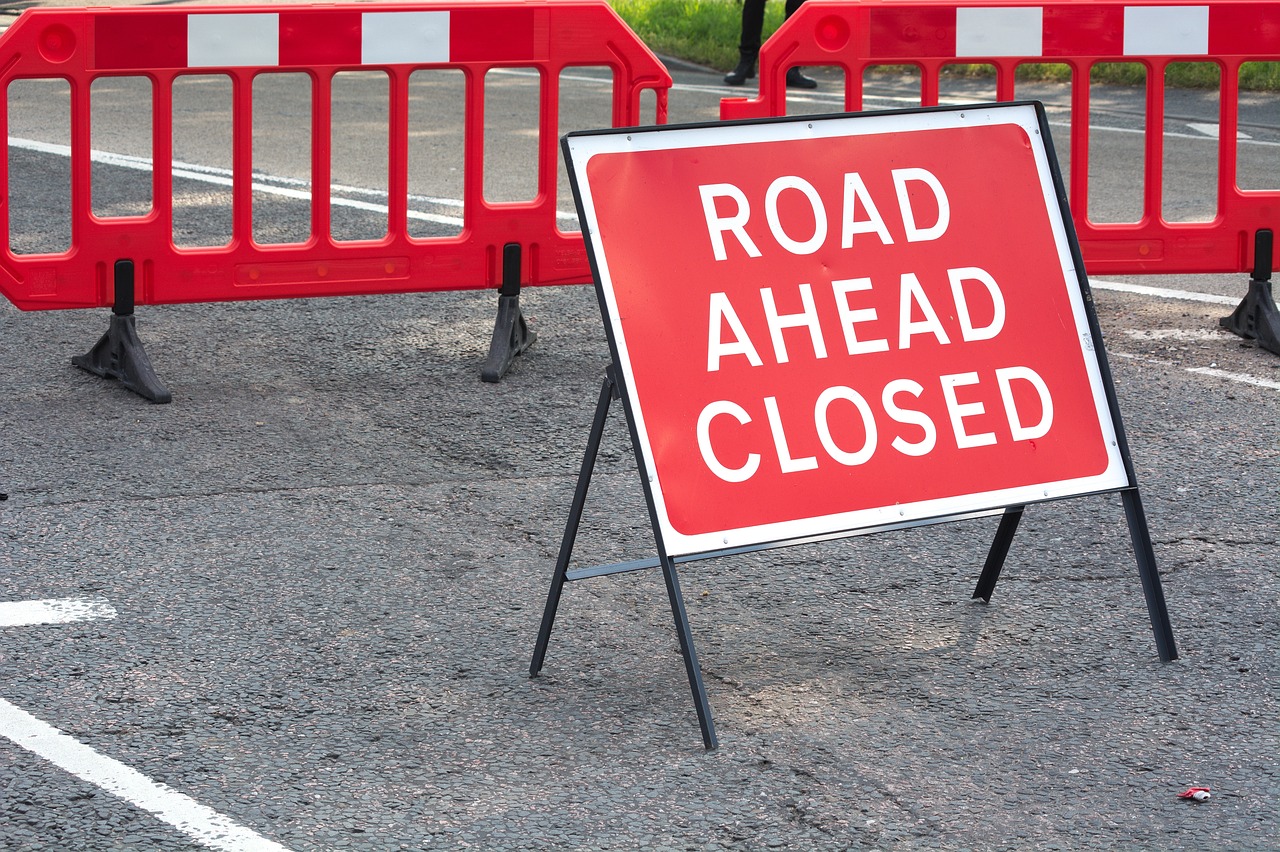
Assessing Potential Hazards
When it comes to creating a safe haven for your children in the backyard, the very first step is . This process is akin to being a detective, where your mission is to uncover any lurking dangers that could turn a fun day into a disaster. Start by walking through your yard with a keen eye, looking for sharp objects like broken glass or rusty nails that could cause injuries. Don’t forget to check for toxic plants that might be hiding among the greenery, as well as uneven surfaces that could trip up your little ones while they’re running around.
It's important to remember that children are naturally curious and tend to explore their surroundings. Therefore, you should also consider the following hazards:
- Sharp Edges: Look for fences, garden tools, or furniture that have jagged edges.
- Water Hazards: If you have a pool, pond, or even a birdbath, ensure there are safety measures in place to prevent drowning.
- Insects and Animals: Be aware of any nests or burrows that could house stinging insects or snakes.
Once you've identified these hazards, it’s crucial to take immediate action. For example, consider using a storage shed to keep tools and equipment out of reach and installing safety covers on pools. By doing this, you are not just removing potential dangers but also setting a precedent for safety that your children will learn to respect. Think of your backyard as a canvas; by removing hazards, you’re painting a picture of safety and fun that your kids can enjoy without worry.
Additionally, it’s wise to engage your children in this process. Teach them about the dangers they might encounter and encourage them to speak up if they see something that seems unsafe. This not only empowers them but also instills a sense of responsibility. Remember, a safe backyard is a happy backyard!
Q: How often should I assess my backyard for hazards?
A: It's a good practice to assess your backyard at least once a season, or more frequently if you notice changes in the environment, such as new plants growing or after heavy storms.
Q: What should I do if I find toxic plants?
A: If you discover toxic plants, carefully remove them from your yard and replace them with non-toxic alternatives. Always wear gloves and dispose of them properly.
Q: How can I teach my kids about safety in the backyard?
A: Create fun and interactive lessons about safety rules, perhaps through games or role-playing scenarios. Encourage them to ask questions and share their thoughts on what they think is safe or unsafe.
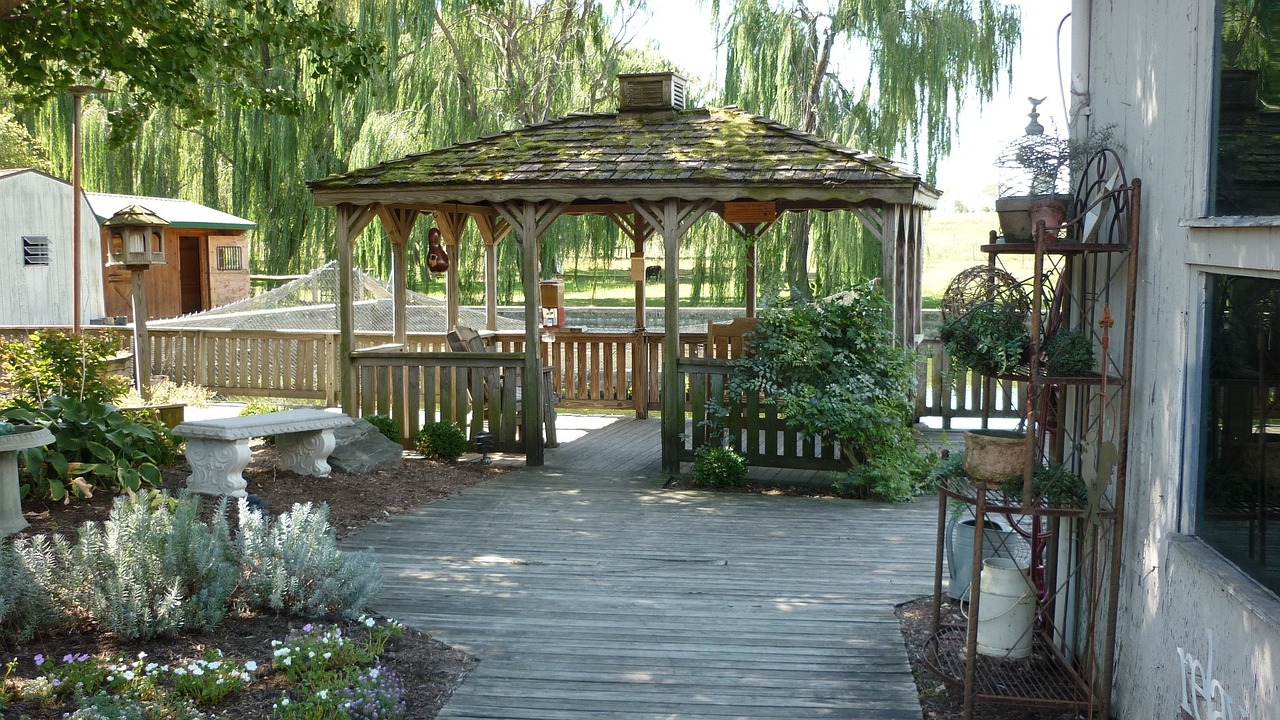
Safe Landscaping Practices
When it comes to making your backyard a safe haven for kids, play a crucial role. It's not just about aesthetics; it's about creating an environment where children can explore and play without the constant worry of hidden dangers. One of the first steps in achieving this is to carefully consider the types of plants and materials you use in your landscaping. For instance, opting for child-friendly plants not only enhances the beauty of your space but also ensures that curious little hands and mouths are safe from harm. Imagine a vibrant garden filled with flowers that are safe to touch and smell, rather than a patch of potentially toxic plants lurking in the shadows.
Another essential aspect of safe landscaping is maintaining clear pathways and play areas. Think of your backyard as a playground labyrinth; you want your kids to navigate it with ease and safety. This means removing any obstacles that could lead to trips or falls, such as garden tools, hoses, or uneven ground. A well-organized space not only promotes safe play but also encourages children to engage in outdoor activities, which is vital for their physical and mental development.
Moreover, incorporating soft ground cover in play areas can significantly reduce the risk of injuries. Instead of allowing hard surfaces like concrete or bare soil, consider using materials such as mulch, grass, or rubber mats. These materials can cushion falls, making your backyard a safer place for children to run, jump, and play freely. Just imagine the peace of mind you'll have knowing that your kids can tumble and roll without the fear of serious injury!
In addition to these practices, it's also beneficial to create designated play zones within your backyard. This can be as simple as marking off areas with decorative stones or planting low shrubs that define the space. By establishing clear boundaries, children will have a better understanding of where they can play safely, which further minimizes the risk of accidents. Remember, a well-thought-out landscape is not only visually appealing but also a haven for safe childhood adventures.
Q: What are some child-friendly plants I can use in my backyard?
A: Some great options include sunflowers, marigolds, and snapdragons, all of which are non-toxic and safe for children.
Q: How can I ensure my play areas are safe?
A: Regularly inspect play areas for hazards, use soft surfacing materials, and keep them free of clutter to promote safety.
Q: Why is it important to establish play boundaries?
A: Setting boundaries helps children understand where it’s safe to play, reducing the likelihood of them wandering into dangerous areas.
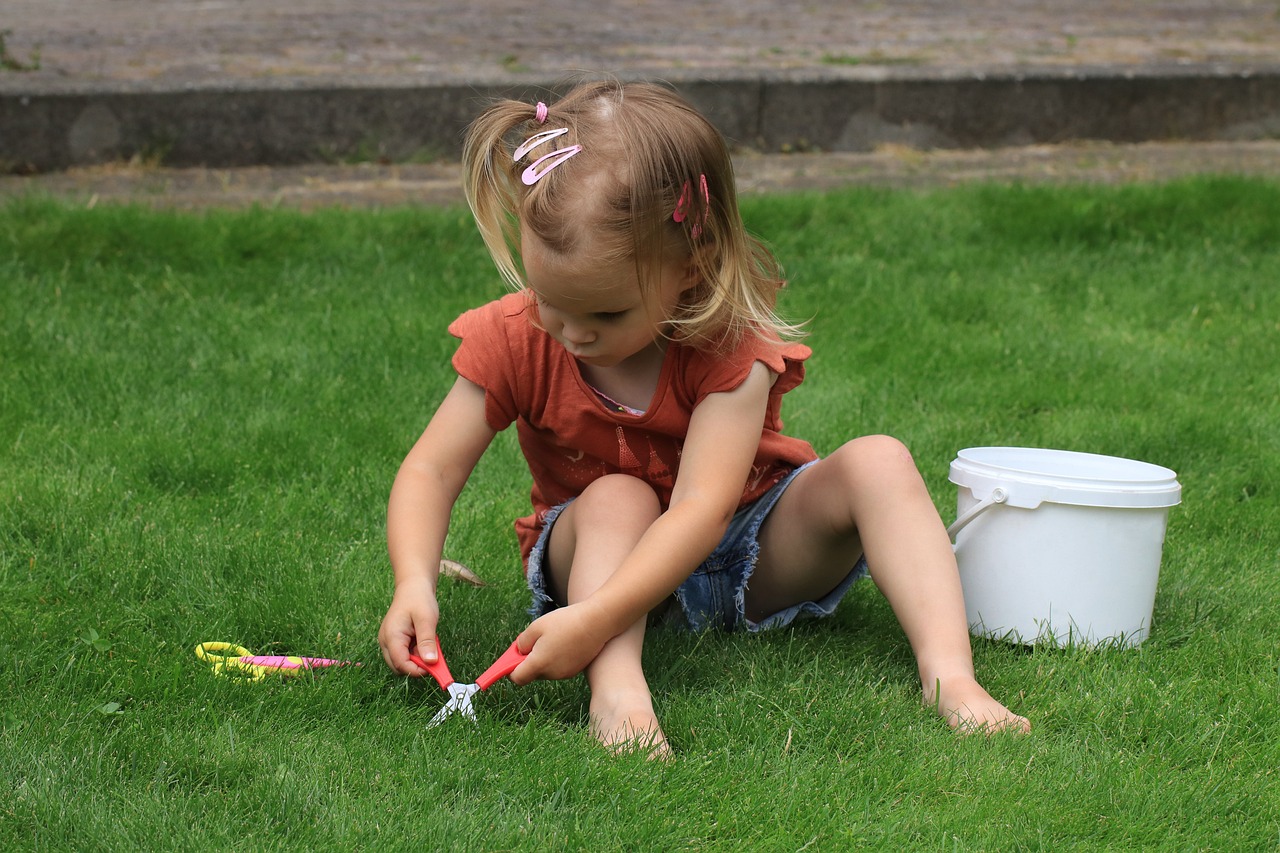
Choosing Non-Toxic Plants
When it comes to creating a safe haven in your backyard for your little ones, is one of the most crucial steps you can take. Children are naturally curious and often explore their surroundings by touching, tasting, and even eating things they shouldn’t. Therefore, it’s essential to familiarize yourself with which plants are safe and which ones could pose a risk. Imagine your backyard as a treasure trove of adventure, where every flower and shrub invites exploration, but you want to ensure that these treasures are safe to discover!
To help you navigate the world of plants, here’s a quick guide to some common non-toxic options that can beautify your space while keeping it safe:
| Plant Name | Benefits |
|---|---|
| Sunflower | Bright and cheerful, sunflowers attract birds and pollinators. |
| Marigold | These vibrant flowers are great for pest control and are safe for kids. |
| Spider Plant | An easy-to-care-for houseplant that purifies the air and is non-toxic. |
| Boston Fern | Not only beautiful, but also helps to improve indoor air quality. |
In addition to knowing which plants are safe, it’s important to consider the overall layout of your garden. For instance, placing non-toxic plants in areas where children frequently play can help minimize any risks. Furthermore, you might want to create a designated garden space where kids can help water and tend to the plants, fostering a sense of responsibility and connection to nature. Just think about how rewarding it can be for them to see the fruits of their labor bloom!
While it’s great to focus on non-toxic plants, you should also be aware of the common toxic plants that you might find in your area. For example, plants like foxglove, oleander, and azalea can be harmful if ingested. It’s like having a secret list of villains in your garden that you need to keep an eye on! By removing or avoiding these plants, you can create a safer environment for your children to enjoy.
Finally, consider the benefits of using native plants in your landscaping. Native plants are not only well-adapted to your local climate, but they also require less maintenance and are less likely to be invasive. This means you’ll spend less time worrying about your garden and more time enjoying it with your kids. Plus, native plants often provide essential habitats for local wildlife, making your backyard a vibrant ecosystem.
In summary, choosing non-toxic plants is a vital step in ensuring your backyard is a safe space for children. By selecting the right plants and being aware of potential hazards, you can create a beautiful, inviting, and safe environment for your kids to explore and play. Remember, the goal is to cultivate a backyard that sparks joy and curiosity, all while keeping safety at the forefront!
- What are some examples of non-toxic plants for kids? Sunflowers, marigolds, and spider plants are great options.
- How can I identify toxic plants in my backyard? Research local plant species and consult a gardening expert or reliable online resources.
- Are native plants safer for children? Yes, native plants are typically safer and better suited to local environments.
- What should I do if my child ingests a toxic plant? Contact your local poison control center immediately for guidance.
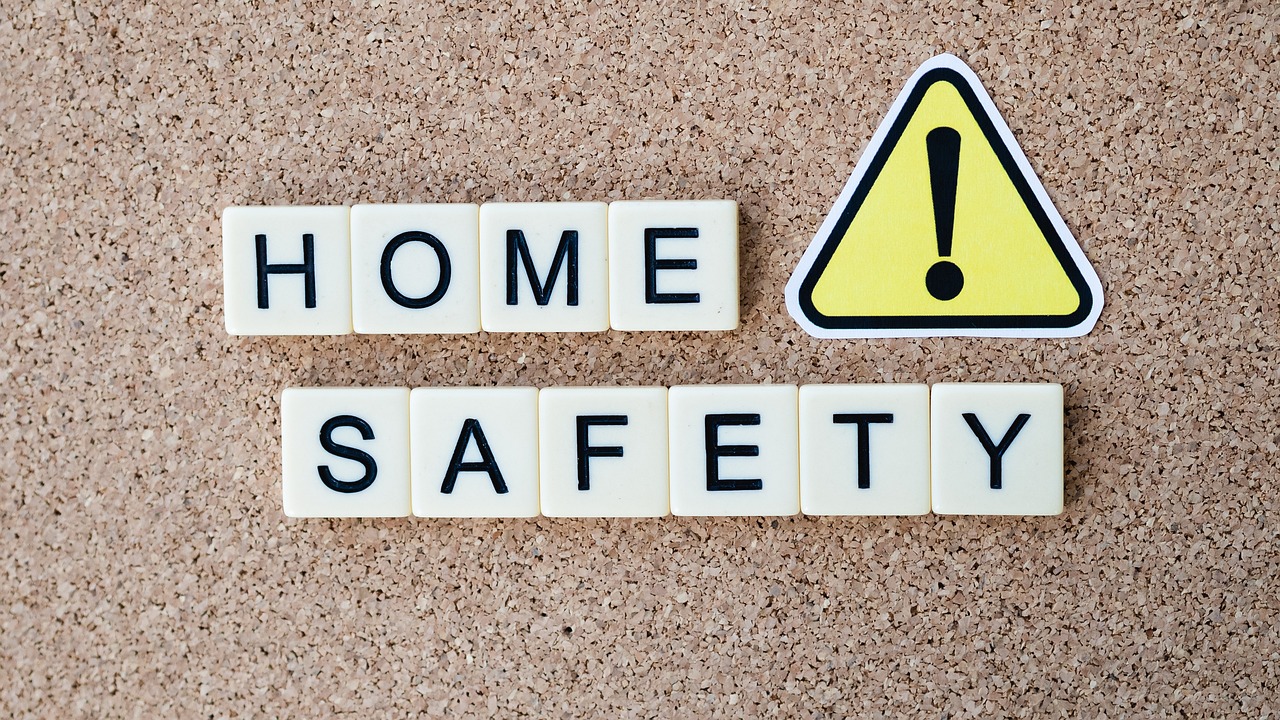
Common Toxic Plants
When it comes to ensuring a safe backyard for children, being aware of the is crucial. Many plants that are commonly found in gardens can pose serious health risks if ingested. For instance, foxglove is a beautiful flowering plant that contains compounds toxic to the heart, which can be particularly dangerous for curious little hands that might want to touch or taste it. Similarly, oleander, while often admired for its vibrant blooms, is extremely toxic and can cause severe reactions if any part of the plant is ingested.
It's not just the allure of these plants that can be problematic; their presence can lead to accidental poisoning. Children are naturally inquisitive and may not recognize that certain plants are harmful. Therefore, it's essential to familiarize yourself with these plants and remove them from your backyard if you have children. Here’s a brief overview of some common toxic plants to watch out for:
| Plant Name | Toxic Parts | Symptoms of Poisoning |
|---|---|---|
| Foxglove | All parts | Heart problems, nausea, vomiting |
| Oleander | All parts | Heart irregularities, stomach pain, dizziness |
| Azalea | Leaves | Vomiting, diarrhea, lethargy |
| Castor Bean | Seeds | Severe abdominal pain, nausea, weakness |
In addition to these plants, there are many others that can be harmful. The best approach is to research any plants you are considering for your garden. Many resources are available online that can help you identify toxic plants and suggest safer alternatives. By being proactive and educated, you can create a beautiful backyard that is also a safe haven for your children.
Remember, the goal is to create an environment where children can explore and play without the constant worry of encountering something dangerous. Removing toxic plants is just one step in creating a safe backyard, but it’s a significant one that can prevent potential accidents and health issues.
- What should I do if my child ingests a toxic plant? If you suspect your child has ingested a toxic plant, call your local poison control center or seek medical help immediately.
- How can I identify toxic plants in my backyard? You can identify toxic plants by researching them online or consulting with a local horticulturist or garden center.
- Are there any safe plants I can use in my backyard? Yes, there are many non-toxic plants that are safe for children. Look for options like marigolds, sunflowers, or herbs like basil and mint.
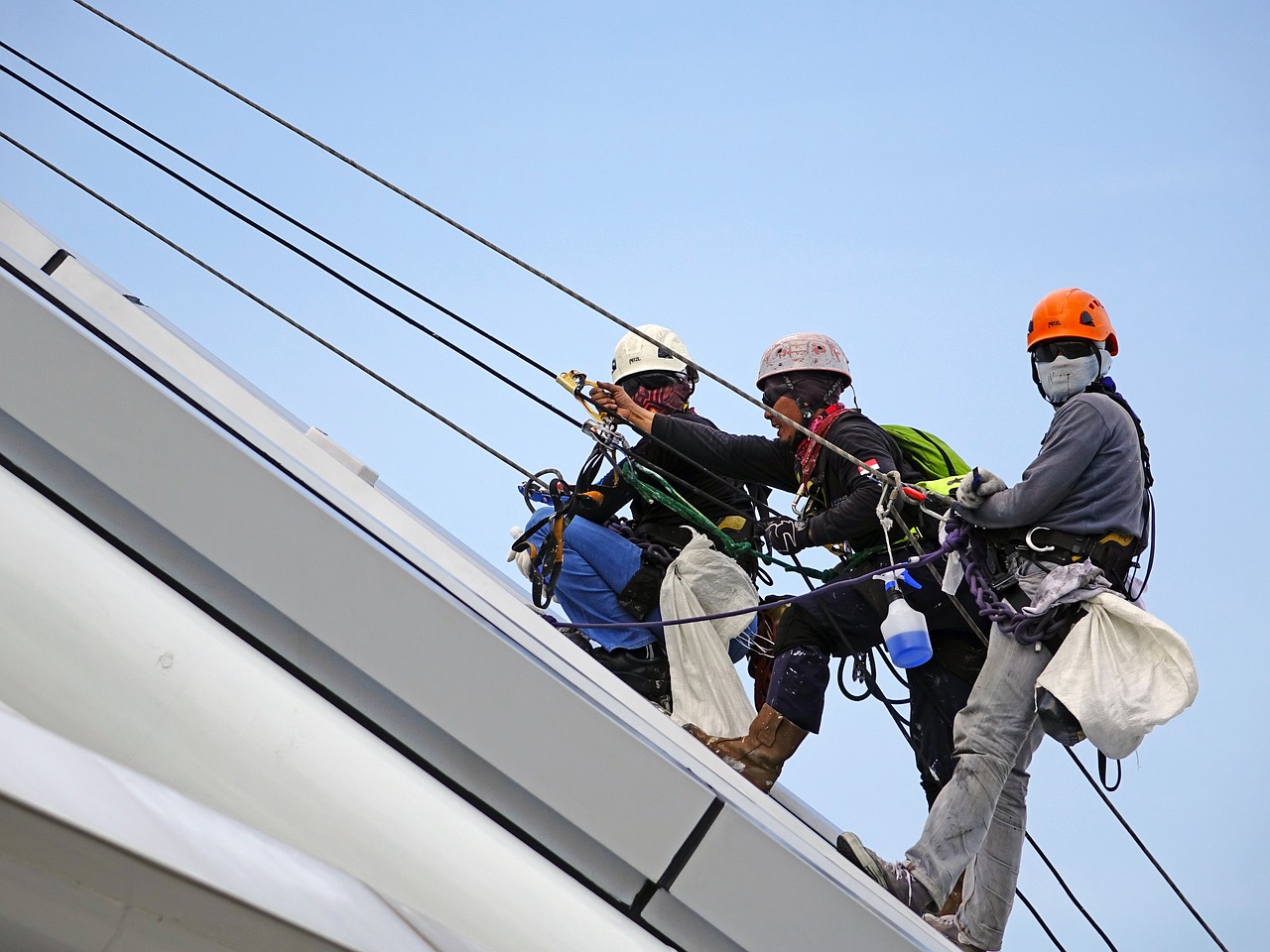
Benefits of Native Plants
This article outlines essential steps to ensure your backyard is a safe environment for children, covering various aspects from landscaping to equipment, and tips for supervision.
Identifying potential hazards in your backyard is the first step to ensuring safety. This involves looking for sharp objects, toxic plants, and uneven surfaces that could pose risks to children.
Implementing safe landscaping practices can significantly reduce risks. This includes selecting child-friendly plants and ensuring that pathways and play areas are clear of obstacles and potential dangers.
Selecting non-toxic plants is crucial for a safe play environment. Parents should familiarize themselves with which plants are safe and which can be harmful if ingested by curious children.
Some common plants, like foxglove and oleander, can be toxic to children. Knowing these plants can help parents avoid them in their backyard landscaping.
Using native plants in your backyard is not just a trend; it's a smart choice for enhancing safety and sustainability. Native plants are well-adapted to the local climate and soil conditions, which means they require less maintenance and are more resilient against pests and diseases. This resilience translates to a safer environment for your children, as you won't need to use harmful pesticides or chemicals that could pose health risks.
Moreover, native plants provide essential habitats for local wildlife, which can enrich your backyard ecosystem. This natural biodiversity can create a more engaging and educational environment for children, allowing them to learn about nature firsthand. For example, observing butterflies or birds can spark curiosity and encourage outdoor exploration, all while staying within a safe and familiar area.
In addition to their ecological benefits, native plants often thrive without excessive watering or fertilization, making them a sustainable choice. This not only saves water but also reduces the likelihood of chemical runoff that could contaminate nearby areas where children play. Here are some key benefits of incorporating native plants into your backyard:
- Low Maintenance: Native plants typically require less care and are more resilient.
- Safe Environment: Reduced need for pesticides and chemicals means a healthier space for kids.
- Educational Opportunities: They provide a living classroom for children to learn about local ecology.
- Wildlife Support: Attract beneficial insects and birds that can enhance the backyard environment.
By choosing native plants, you're not just making a choice for aesthetics; you're creating a safer, more enriching environment for your children to play and grow.
Designating specific areas for play can help keep children safe. This includes using soft materials for ground cover and ensuring play equipment is age-appropriate and well-maintained.
Choosing and installing safe play equipment is vital for backyard safety. Equipment should meet safety standards and be age-appropriate to prevent accidents and injuries.
Regular maintenance of play equipment prevents wear and tear that could lead to accidents. Inspections should be conducted frequently to ensure everything is in good condition.
Using safe surfacing materials, such as mulch or rubber mats, can reduce the risk of injury from falls. These materials cushion falls and provide a safer play environment.
Supervising children while they play is essential for safety. Parents should establish clear rules and stay vigilant to prevent accidents and ensure children are playing safely.
Establishing boundaries helps children understand where they can play safely. Parents should communicate these boundaries clearly and consistently to reinforce safety.
Teaching children safety rules about outdoor play can empower them to make safe choices. This includes understanding the importance of staying within designated areas and avoiding dangerous objects.
Q: What are some common hazards in a backyard?
A: Common hazards include sharp tools, toxic plants, uneven surfaces, and unsecured play equipment.
Q: How can I identify non-toxic plants for my backyard?
A: Research local plant guides or consult with a gardening expert to find a list of non-toxic plants suitable for your area.
Q: How often should I check play equipment for safety?
A: It's recommended to inspect play equipment at least once a month and after any severe weather events.
Q: What materials are best for safe surfacing in play areas?
A: Safe surfacing options include rubber mats, mulch, and grass, as they provide cushioning for falls.
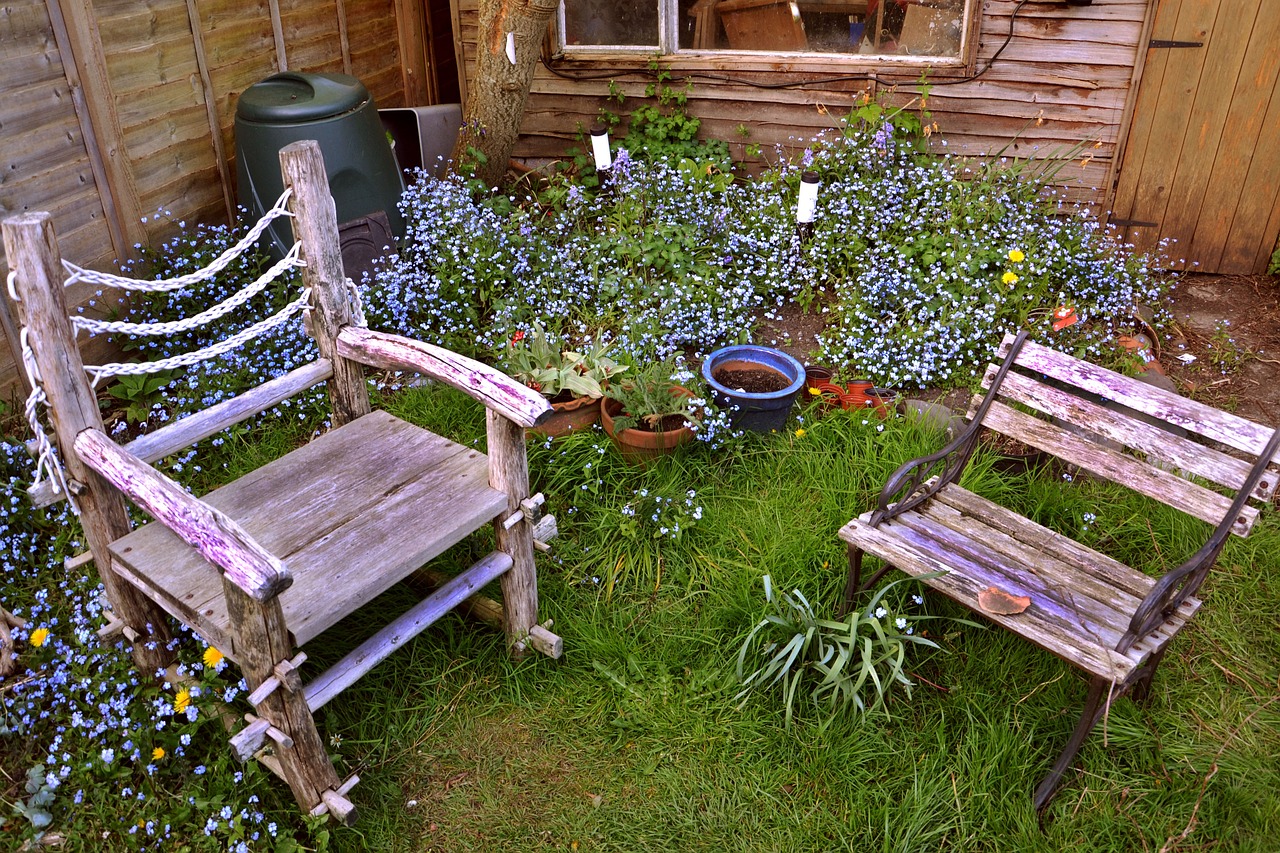
Creating Safe Play Areas
Designing safe play areas in your backyard is not just a good idea; it's an essential part of ensuring your child's safety while they explore and have fun. When you think about it, a backyard can be a wonderland of adventure, but it can also harbor hidden dangers. So, how do we transform this space into a haven for our little explorers? First, it's crucial to designate specific areas for play. This helps to keep children focused and aware of their surroundings, minimizing the risk of accidents. Imagine your yard as a giant canvas—every element should be intentional, from the placement of swings to the layout of the sandbox.
One of the most effective strategies is to use soft materials for ground cover. Traditional grass might look nice, but it doesn't always provide the cushioning that kids need when they take a tumble. Instead, consider using materials such as mulch, rubber mats, or even grass turf. These options create a safer play environment by absorbing impact and reducing the chance of injury. For instance, rubber mats are not only soft but also easy to clean, making them a practical choice for busy parents.
Moreover, when setting up play equipment, ensure that it is age-appropriate and well-maintained. Just because a swing set looks fun doesn't mean it's right for every child. Always check for safety standards and regularly inspect the equipment for any wear and tear. A simple checklist can help you keep track of maintenance tasks:
| Maintenance Task | Frequency |
|---|---|
| Inspect play equipment for damage | Monthly |
| Check ground cover for wear | Every season |
| Clean play areas | Weekly |
Additionally, consider the layout of your play areas. Keep them away from any potential hazards, such as pools, fences, or busy walkways. Children are naturally curious and may wander into dangerous areas if they are not clearly defined. By creating a designated play zone, you can help your child understand where it's safe to roam and explore.
Lastly, don't forget to involve your kids in the process! Ask them what they want in their play area. This not only makes them feel included but also allows you to gauge their interests. When children have a say in their play environment, they are more likely to respect the boundaries you've set. So, as you embark on this journey of creating a safe play area, remember that safety is not just about preventing accidents; it's about fostering an environment where your kids can thrive and enjoy their adventures.
- What materials are best for ground cover in play areas? Soft materials such as mulch, rubber mats, or artificial grass are excellent choices for cushioning falls.
- How can I ensure play equipment is safe? Regularly inspect equipment for damage and ensure it meets safety standards for your child’s age group.
- Should I involve my children in designing their play area? Yes! Involving your kids can help them feel more connected to their space and understand safety boundaries better.
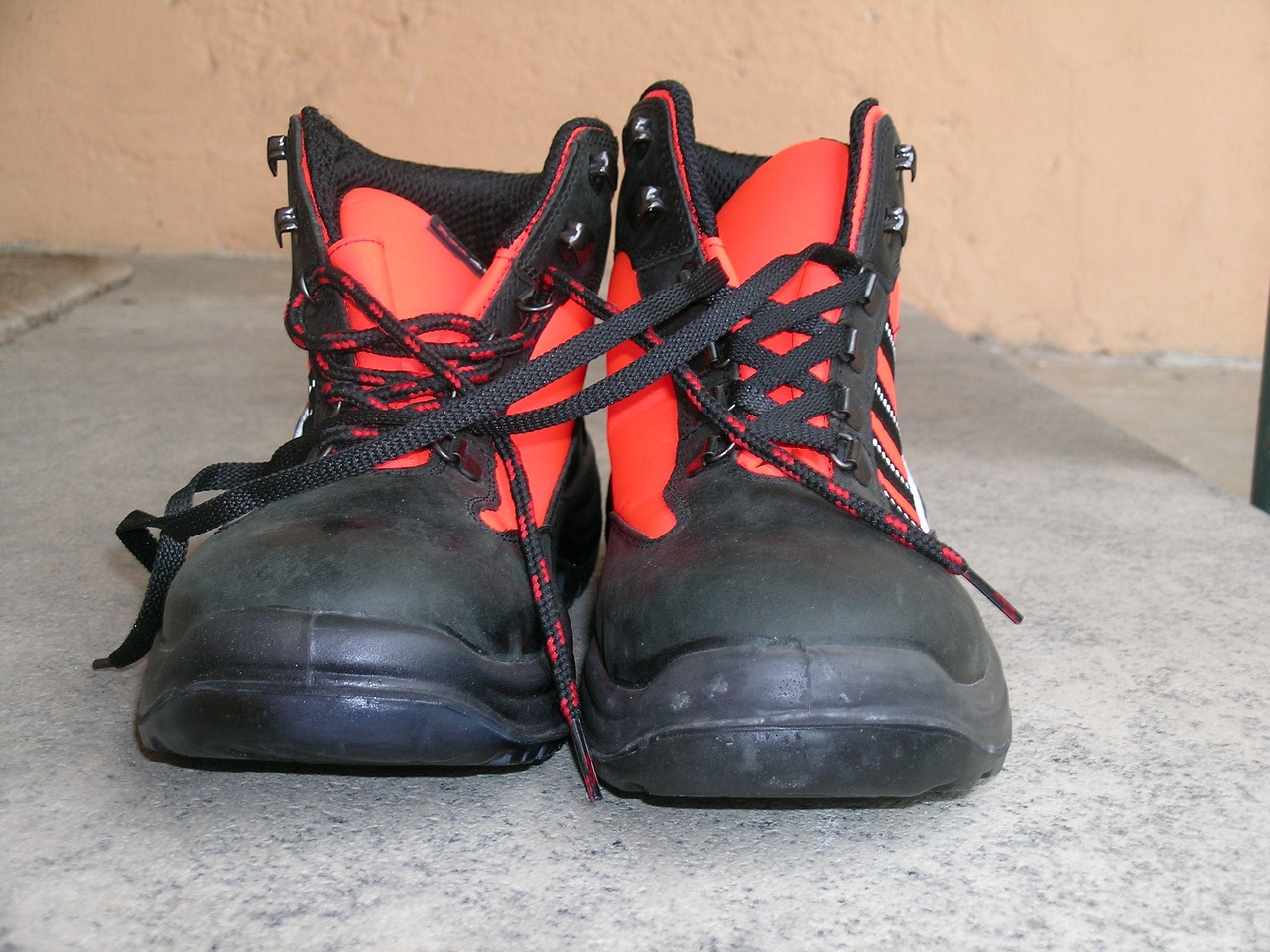
Installing Safe Play Equipment
When it comes to creating a safe haven for your kids to play, is a non-negotiable step. It's not just about having swings and slides; it's about ensuring that every piece of equipment is designed with child safety in mind. You want to choose equipment that meets the highest safety standards, which can significantly reduce the risk of accidents and injuries. But how do you know what to look for? Let's dive into the essential elements to consider when selecting and installing play equipment.
First off, always check for compliance with safety regulations. In the United States, the Consumer Product Safety Commission (CPSC) provides guidelines for playground safety. This means you should look for equipment that has been tested and certified. If you're unsure, a quick look at the manufacturer's specifications can provide clarity. Remember, not all equipment is created equal, and safety should always come first.
Another critical aspect is ensuring that the play equipment is age-appropriate. Kids grow at different rates, and what might be safe for a toddler could be dangerous for a 10-year-old. For instance, a toddler swing should have a high back and sides to prevent falls, while older children might prefer swings that allow for more freedom of movement. Always consider the age range of your children when selecting equipment to ensure that they can play safely without the risk of injury.
Let's not forget about installation! Proper installation is just as crucial as the equipment itself. Many accidents occur due to improper setup. If you're not a DIY expert, it might be wise to hire a professional to ensure everything is securely anchored and stable. Additionally, always refer to the manufacturer's installation instructions, as they usually contain valuable information about the best practices for setting up the equipment.
Furthermore, the surrounding area plays a significant role in safety. The ground under and around play equipment should be cushioned to minimize injury from falls. Soft materials like mulch, rubber mats, or even sand can provide the necessary cushioning. Ideally, you should have a safety zone that extends at least six feet beyond the edges of the equipment. This zone acts as a buffer to prevent injuries from falls or collisions.
To give you a clearer picture, here's a simple table that outlines the key considerations for installing safe play equipment:
| Consideration | Details |
|---|---|
| Compliance | Ensure equipment meets CPSC guidelines |
| Age-Appropriateness | Select equipment suitable for your child's age group |
| Proper Installation | Follow manufacturer instructions or hire a professional |
| Safety Surfacing | Use mulch, rubber mats, or sand to cushion falls |
In conclusion, installing safe play equipment is a multi-faceted task that requires careful consideration and planning. By focusing on compliance, age-appropriateness, proper installation, and safety surfacing, you can create a backyard that not only provides fun but also keeps your children safe. Remember, a safe play environment is one where kids can explore, learn, and grow without the constant worry of injury.
Q: How can I tell if play equipment is safe for my child?
A: Always look for equipment that meets safety standards set by organizations like the CPSC. Check for age-appropriateness and inspect the equipment for any visible signs of wear or damage.
Q: What materials should I use for safety surfacing?
A: Safe surfacing materials include mulch, rubber mats, and sand. These materials help cushion falls and reduce the risk of injury.
Q: Should I hire a professional for installation?
A: If you're not confident in your DIY skills, hiring a professional can ensure that the equipment is installed correctly and safely.
Q: How often should I inspect play equipment?
A: Regular inspections should be conducted at least once a month, or more frequently if the equipment is used often. Look for any signs of wear, rust, or instability.

Maintaining Equipment Regularly
This article outlines essential steps to ensure your backyard is a safe environment for children, covering various aspects from landscaping to equipment, and tips for supervision.
Identifying potential hazards in your backyard is the first step to ensuring safety. This involves looking for sharp objects, toxic plants, and uneven surfaces that could pose risks to children.
Implementing safe landscaping practices can significantly reduce risks. This includes selecting child-friendly plants and ensuring that pathways and play areas are clear of obstacles and potential dangers.
Selecting non-toxic plants is crucial for a safe play environment. Parents should familiarize themselves with which plants are safe and which can be harmful if ingested by curious children.
Some common plants, like foxglove and oleander, can be toxic to children. Knowing these plants can help parents avoid them in their backyard landscaping.
Using native plants can enhance safety, as they are typically well-adapted to the local environment and less likely to be toxic or invasive.
Designating specific areas for play can help keep children safe. This includes using soft materials for ground cover and ensuring play equipment is age-appropriate and well-maintained.
Choosing and installing safe play equipment is vital for backyard safety. Equipment should meet safety standards and be age-appropriate to prevent accidents and injuries.
Regular maintenance of play equipment is essential to prevent wear and tear that could lead to accidents. Just like a car needs an oil change or a tune-up, your backyard equipment requires regular checks to ensure everything is in good condition. Parents should set a schedule for inspections, ideally at the beginning of each season, to catch any issues early. During these inspections, look for:
- Rust or corrosion on metal parts
- Loose screws or bolts
- Frayed ropes or swings
- Cracks in plastic components
- Wear on safety surfacing
Furthermore, it’s not just about checking for damage; it’s also about cleanliness. Keeping the equipment free of debris, mud, and leaves can help maintain its integrity and safety. If you notice any issues, address them immediately—don't wait until someone gets hurt. Remember, a little maintenance goes a long way in ensuring your backyard remains a safe haven for your kids.
Supervising children while they play is essential for safety. Parents should establish clear rules and stay vigilant to prevent accidents and ensure children are playing safely.
Establishing boundaries helps children understand where they can play safely. Parents should communicate these boundaries clearly and consistently to reinforce safety.
Teaching children safety rules about outdoor play can empower them to make safe choices. This includes understanding the importance of staying within designated areas and avoiding dangerous objects.
Q: How often should I inspect my backyard play equipment?
A: It's best to inspect your play equipment at least once a season, or more frequently if your children use it often. Regular checks can help catch issues before they become safety hazards.
Q: What should I do if I find damaged equipment?
A: If you find any damage during your inspection, address it immediately. This could mean repairing or replacing parts, or even taking the equipment out of use until it’s safe again.
Q: Are there specific safety standards I should look for when purchasing new play equipment?
A: Yes! Look for equipment that meets ASTM (American Society for Testing and Materials) standards. This ensures that the equipment has been tested for safety and durability.
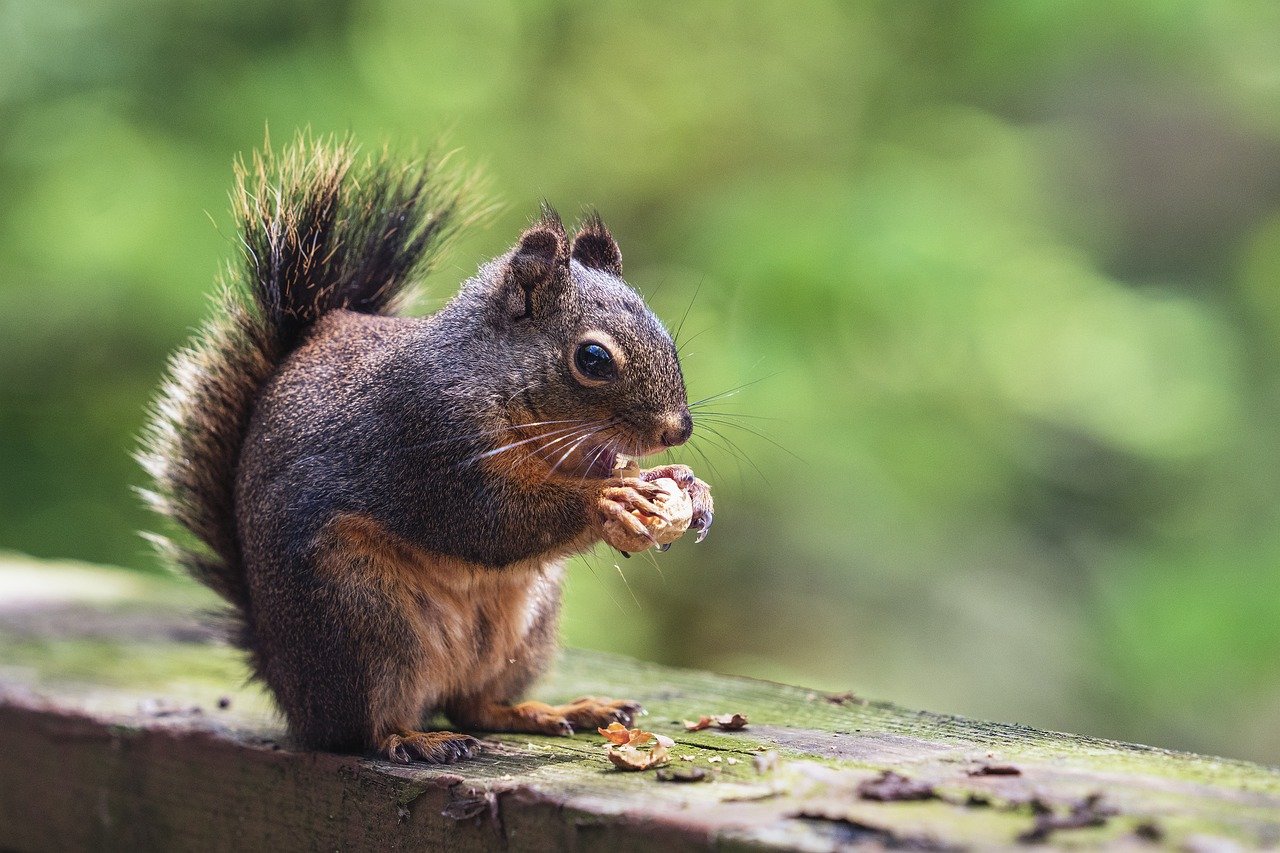
Safe Surfacing Options
When it comes to creating a safe play environment in your backyard, the choice of surfacing materials is crucial. Think of the ground beneath your child's feet as the safety net that catches them when they fall. By selecting the right materials, you can significantly reduce the risk of injuries, making outdoor play both fun and secure. The two most popular options for safe surfacing are mulch and rubber mats. Each has its own set of advantages that can cater to various needs and preferences.
Mulch, often made from wood chips or shredded bark, is a natural option that not only provides cushioning but also promotes drainage. It can absorb impact effectively, making it a great choice for areas under swings or climbing structures. However, it's essential to keep mulch at a depth of 6 to 12 inches to ensure maximum safety. Plus, it’s biodegradable, which means it can enrich the soil over time, creating a more vibrant backyard ecosystem.
On the other hand, rubber mats offer a more durable solution. These mats are designed specifically for playgrounds and can withstand the elements much better than organic materials. They come in a variety of colors and thicknesses, allowing you to customize your play area to match your backyard aesthetic. Rubber mats are also easy to clean, making them a low-maintenance option for busy parents. They can significantly reduce the risk of injuries from falls, especially for older children who may engage in more vigorous play.
It's important to note that both options require regular maintenance. Mulch needs to be replenished periodically, while rubber mats should be checked for wear and tear to ensure they remain effective. To help you decide which option might be best for your backyard, here’s a quick comparison:
| Feature | Mulch | Rubber Mats |
|---|---|---|
| Cushioning | Good | Excellent |
| Durability | Moderate | High |
| Maintenance | Requires replenishment | Low maintenance |
| Environmental Impact | Biodegradable | Recyclable |
| Cost | Generally lower | Higher initial cost |
Ultimately, the decision between mulch and rubber mats will depend on your specific needs, budget, and aesthetic preferences. Regardless of which option you choose, ensuring that your backyard has a safe surfacing option is a vital step in creating a secure play area for your children.
- What is the best surfacing material for a backyard playground? The best material often depends on your specific needs, but both mulch and rubber mats are excellent options for safety.
- How deep should mulch be for safety? A depth of 6 to 12 inches is recommended to provide adequate cushioning for falls.
- Are rubber mats safe for young children? Yes, rubber mats are designed to absorb impact and are suitable for children of all ages.
- How often should I replace mulch? Mulch should be replenished annually or as needed, depending on wear and weather conditions.
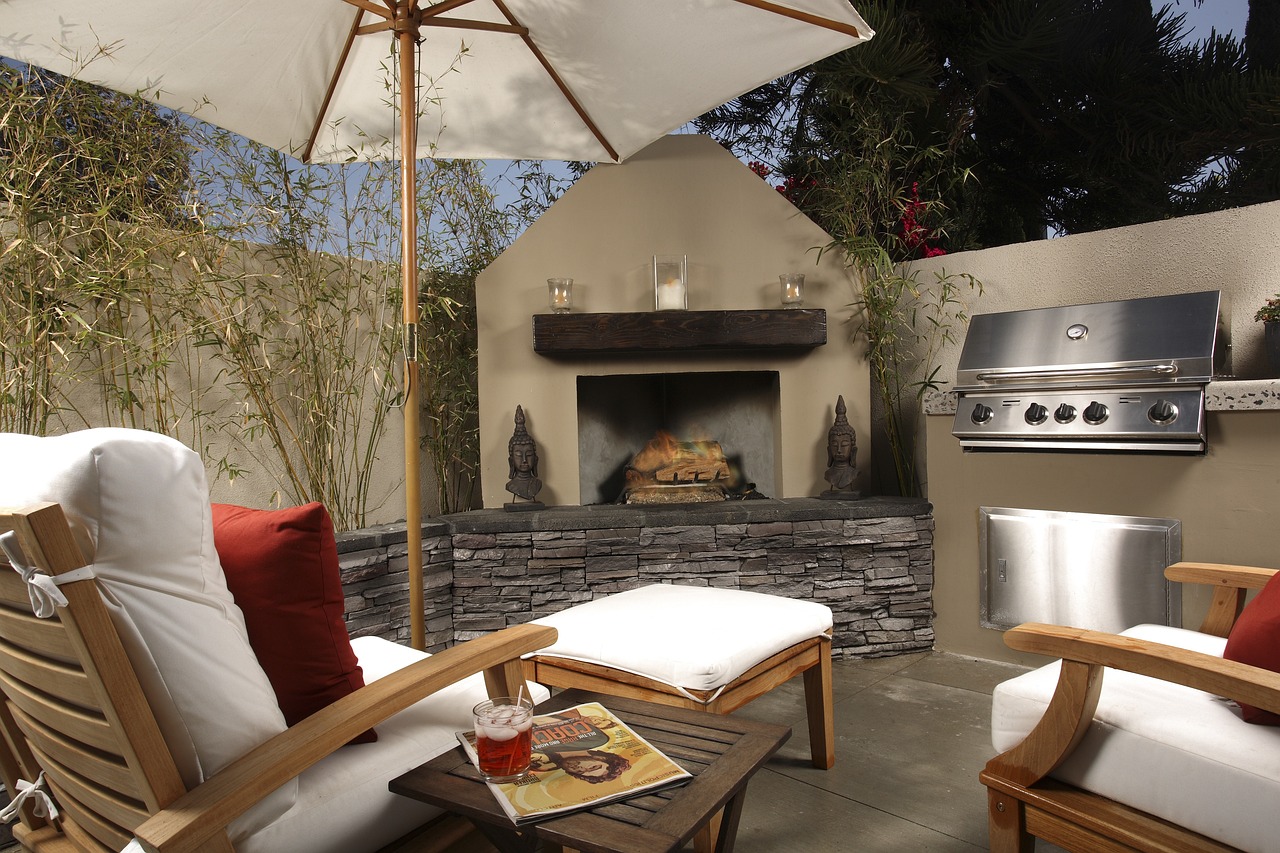
Implementing Supervision Strategies
When it comes to ensuring the safety of your children while they play in the backyard, supervision is key. It's not just about keeping an eye on them; it's about being actively engaged and aware of their surroundings. Imagine your backyard as a mini-adventure park where the fun never ends, but with that fun comes responsibility. As a parent, you need to be the vigilant guardian of this space, ready to step in at a moment's notice. Establishing a supervision strategy can significantly reduce the risk of accidents and help children understand the boundaries of safe play.
One effective approach is to set clear and consistent rules about where children can play and what they can do. For instance, you might designate specific areas for different activities, such as a sandbox for digging and a grassy area for running. Communicating these boundaries clearly helps children understand their play zone and reinforces the idea of safety. You could even create a colorful chart or diagram to visually outline these areas, making it easier for younger kids to grasp. Remember, visual aids can be powerful tools in teaching safety!
Another essential aspect of supervision is teaching children about safety rules. This goes beyond merely telling them what to avoid; it involves engaging them in discussions about why certain behaviors are unsafe. For example, you might explain the importance of not climbing on the play equipment in a way that encourages them to think critically about their actions. By empowering children with knowledge, you're not only keeping them safe but also nurturing their ability to make wise choices independently.
Moreover, staying vigilant means being present and attentive rather than distracted. In our fast-paced world, it’s easy to get sidetracked by our phones, chores, or other distractions. However, when your kids are outside, your focus should be on them. Consider setting designated "playtime" where you put away distractions and engage with your children, whether it’s joining them on the swings or watching them build a fort. This not only enhances their safety but also strengthens your bond.
Lastly, it’s essential to adapt your supervision strategy as your children grow. Younger children may require closer supervision, while older kids might need a bit more freedom. However, even as they become more independent, regular check-ins are crucial. You can establish a routine where you periodically ask them to come to you for a quick chat, ensuring they’re safe and engaged in appropriate activities. Flexibility is key in keeping the balance between safety and independence.
| Question | Answer |
|---|---|
| How can I effectively supervise multiple children? | Designate specific play areas for different activities and rotate your attention among them. Engage older kids to help watch younger ones. |
| What age is appropriate for children to play unsupervised? | It varies by child, but generally, children over the age of 10 can begin to play unsupervised in safe environments, with established boundaries. |
| What should I do if my child doesn't follow safety rules? | Reiterate the importance of the rules and explain the potential consequences of unsafe behavior. Consistency is key in reinforcing boundaries. |
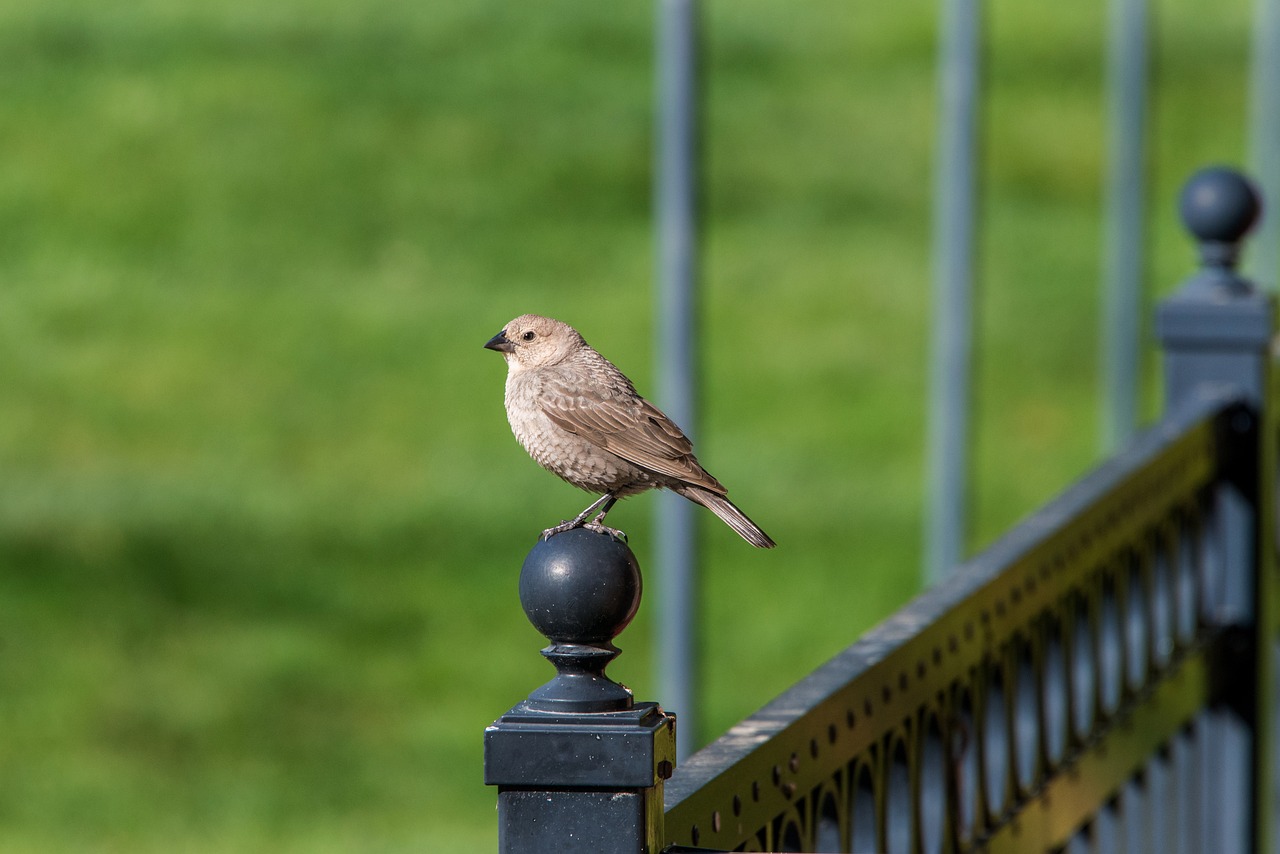
Setting Boundaries
When it comes to keeping our kids safe while they play in the backyard, setting clear boundaries is not just a good idea; it's essential. Think of boundaries as the invisible lines that help children understand where they can roam freely and where they need to be cautious. It's like creating a little world of safety where they can explore without fear of wandering into danger. But how do we go about establishing these boundaries effectively? Here are some strategies that can help.
First and foremost, it's important to communicate these boundaries clearly to your children. You might say something like, "You can play in the sandbox and on the swing set, but please stay away from the garden and the pool." Use simple language that they can understand, and don’t forget to explain *why* these boundaries exist. Children are naturally curious and may not fully grasp the dangers of certain areas or objects. By explaining the reasons behind the boundaries, you're not just telling them what to do; you're teaching them to think critically about their environment.
Additionally, visual cues can be incredibly effective. You might consider using brightly colored flags or even creating a small fence around the play area. This not only reinforces the idea of boundaries but also adds an element of fun to the play environment. Children love engaging with their surroundings, and a colorful boundary can make them feel like they are in a special zone just for them.
Another effective strategy is to establish a system of rewards for following the rules. For instance, if your child plays within the designated areas for a week, consider rewarding them with a small treat or an extra story at bedtime. This positive reinforcement encourages them to adhere to the boundaries you've set and helps them associate safety with rewards, making it more likely they will remember these rules in the future.
Remember, consistency is key. Children thrive on routine and knowing what to expect. Make it a point to regularly remind them of the boundaries, especially if they seem to forget or test the limits. You might say, "Remember, we stay away from the flower beds because some plants can be harmful." Reinforcing this message helps to solidify the understanding that these boundaries are not arbitrary, but rather essential for their safety.
Lastly, it’s crucial to lead by example. If you demonstrate safe behavior and respect for the boundaries you've set, your children are more likely to follow suit. Show them how to enjoy their play area while still being mindful of the restrictions you’ve established. This not only builds trust but also fosters a sense of responsibility in your kids, making them more aware of their surroundings.
In conclusion, setting boundaries in your backyard is about creating a safe haven for your children to explore and play. By clearly communicating, using visual aids, implementing rewards, being consistent, and leading by example, you can ensure that your little ones understand and respect the limits you've established. After all, a safe backyard is not just a luxury; it's a necessity for peace of mind and joyful play.
- What are some effective ways to communicate boundaries to young children?
Using simple language, visual aids, and consistent reminders can help children understand and remember the boundaries.
- How can I make boundaries fun for my kids?
Consider using colorful flags or creating a fun play zone with a small fence to visually mark safe areas.
- What should I do if my child repeatedly crosses the boundaries?
Reiterate the reasons for the boundaries, provide gentle reminders, and consider implementing a reward system for following the rules.
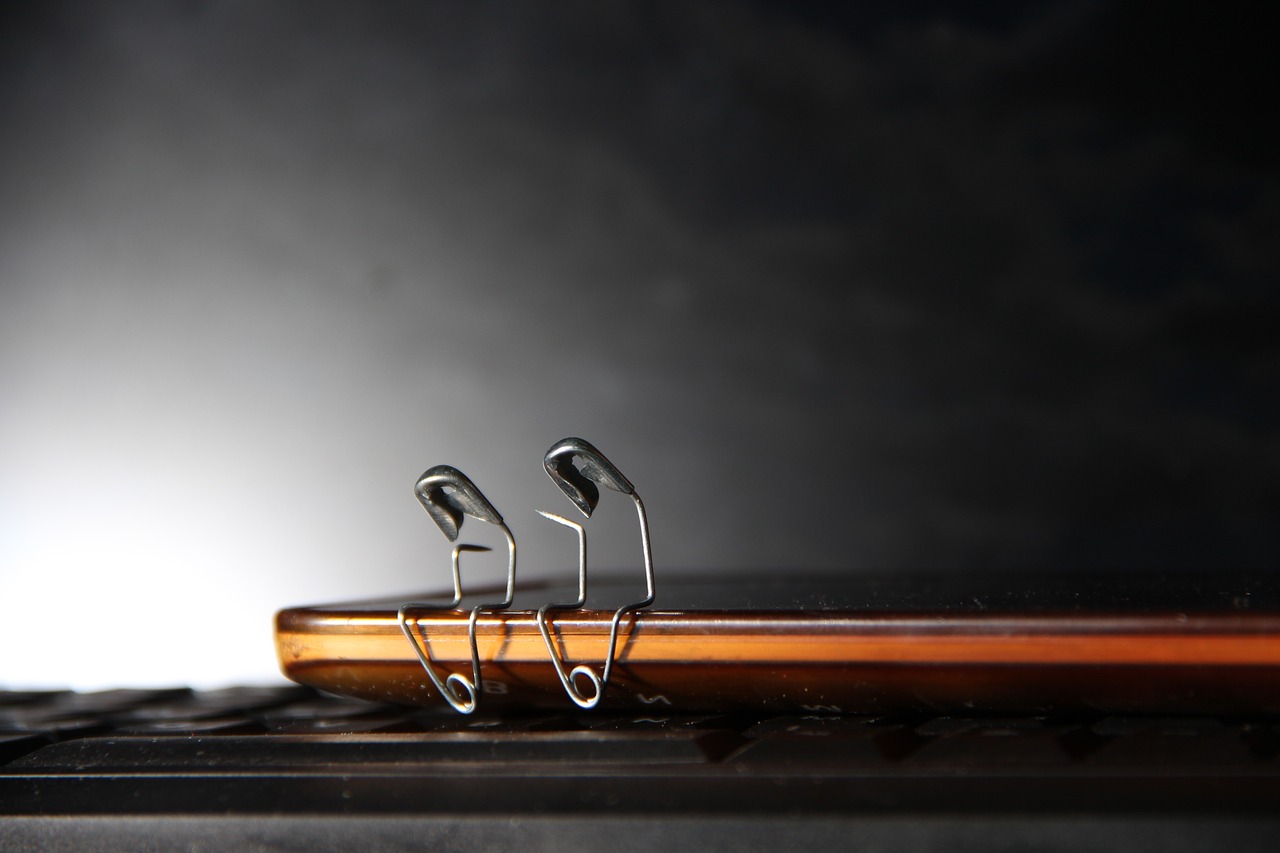
Teaching Safety Rules
Teaching children safety rules about outdoor play is not just a good idea; it's a necessity! Imagine your backyard as a mini adventure park where every corner holds excitement but also potential risks. By instilling safety rules, you empower your children to make wise choices while they explore their surroundings. Start by engaging them in a conversation about what they think is safe and what isn’t. This can be an eye-opening experience for both you and your child.
One effective way to teach these rules is through storytelling. Create fun scenarios where your child can imagine themselves in various situations, like playing near the swing set or climbing a tree. Ask questions like, “What would you do if you see something sharp on the ground?” or “How can you make sure you’re safe while playing with your friends?” This not only makes the learning process enjoyable but also reinforces their understanding of safety.
Additionally, consider creating a visual safety guide together. This could be a colorful poster that outlines key safety rules, such as:
- Always play in designated areas.
- Avoid running near the pool or any water.
- Never climb trees without asking an adult.
- Stay away from sharp tools or equipment.
Place the poster in a visible spot in the backyard, so it serves as a constant reminder. You could even turn it into a fun game by asking your child to point out the rules when they are playing outside. This interactive approach not only reinforces the rules but also makes your child feel involved in their safety.
Remember, it’s essential to lead by example. If your child sees you following safety rules, they are more likely to adopt those behaviors. Use every opportunity to remind them of safety practices, whether it’s during playtime or while doing yard work together. Incorporating safety into everyday activities helps them understand that safety is a priority, not just a set of rules.
In conclusion, teaching safety rules is about creating a culture of safety in your backyard. By engaging your child in discussions, using creative methods like storytelling and visual aids, and modeling safe behavior, you’re setting the stage for a fun yet secure play environment. After all, the best memories are made when kids can play freely and safely!
Q: What are some common safety rules I should teach my children?
A: Common safety rules include playing in designated areas, avoiding running near water, and staying away from sharp tools. Tailor these rules based on your backyard setup.
Q: How can I make safety rules more engaging for my children?
A: Use storytelling, create visual guides, and involve them in discussions about safety. Making it interactive can help them remember the rules better.
Q: How often should I reinforce these safety rules?
A: Regular reinforcement is key! Incorporate safety discussions into daily activities and remind them of the rules during playtime.
Q: What should I do if my child doesn’t follow the safety rules?
A: If your child doesn’t follow the rules, calmly remind them of the importance of safety and discuss the consequences of unsafe behavior. Consistency is crucial.
Frequently Asked Questions
- What are some common hazards I should look for in my backyard?
When assessing your backyard, keep an eye out for sharp objects like broken glass or rusty nails, toxic plants such as foxglove or oleander, and uneven surfaces that can cause tripping. It's crucial to create a safe environment by removing or addressing these hazards.
- How can I choose non-toxic plants for my backyard?
To select non-toxic plants, research and familiarize yourself with safe options for children. You can consult local gardening centers or online resources that list child-friendly plants. Always avoid known toxic varieties to ensure your little ones can explore safely.
- What materials are best for safe surfacing under play equipment?
Safe surfacing options include mulch, rubber mats, or engineered wood fiber. These materials provide cushioning and help reduce the risk of injury from falls, making your play areas much safer for kids.
- How often should I inspect play equipment for safety?
Regular inspections should be conducted at least once a month. Look for signs of wear and tear, loose parts, or any potential hazards that could lead to accidents. Keeping equipment in good condition is key to ensuring children's safety while they play.
- What are effective strategies for supervising children in the backyard?
Establish clear boundaries for where children can play and communicate these rules consistently. Stay vigilant and actively engage with them while they play, which not only ensures safety but also enhances their outdoor experience.
- How can I teach my children safety rules for outdoor play?
Teaching safety rules can be fun and engaging! Use role-playing scenarios or games to make learning about boundaries and safe play exciting. Reinforce the importance of staying within designated areas and avoiding dangerous objects regularly.



